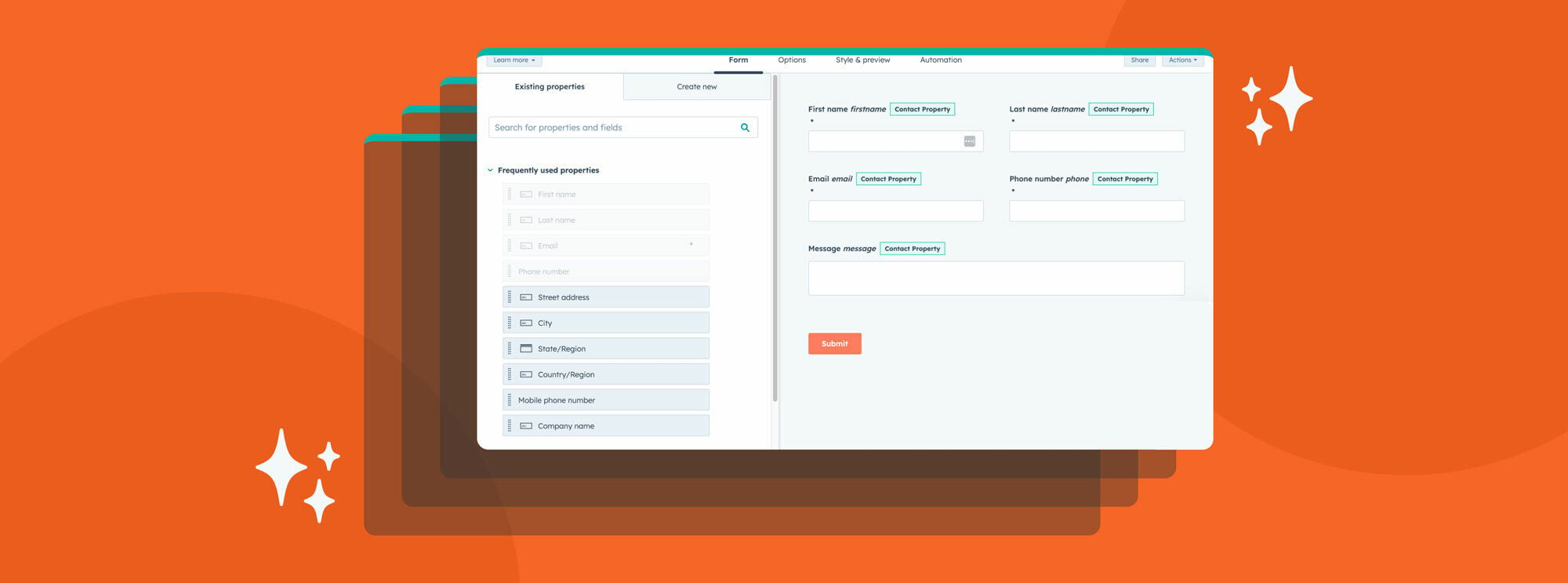HubSpot has evolved from a simple marketing tool into a platform with myriad integrations that can run a big part of your business.
With so many newer tools and integrations for marketing, sales, customer service, website CMS, reporting, chat, account based marketing, and more, it can be hard for you to know if you’re getting your money’s worth out of your investment.
Our agency Raka is a diamond HubSpot solutions provider and when we begin working with a new client on an existing HubSpot account, one of our first steps is to conduct a comprehensive HubSpot audit.
Auditing your HubSpot account provides valuable insight into taking full advantage of all that HubSpot offers. We’ve found there is always room for improvement when it comes to maximizing HubSpot’s benefit. Implementing recommendations from an audit have measurable impacts on the success of your inbound marketing strategy and on your business operations as a whole.
Raka looks at how clients can make best use of HubSpot’s Sales Hub, Marketing Hub, and Service Hub when we audit an account and some of the key areas we check out are listed below.
Table of Contents
What’s involved in a HubSpot audit
A HubSpot audit is a deep dive into the inner workings of your HubSpot account. Not to be confused with HubSpot’s Website Grader, the consultation is designed to identify areas for improvement in your unique account. For example, we may suggest that you update forms to make certain fields required, or recommend changes to your smart CTA trigger criteria. Depending on which HubSpot products you have (Sales, Marketing, Service, CMS), an audit examines the tools you currently use—or should be using.
The result is a streamlined buyer’s experience for your customers while simultaneously helping your team be more efficient.
How it helps your customers
When your HubSpot account is running like a well-oiled machine, it reduces the friction that users may encounter as they move along their buyer’s journey. Creating a seamless, enjoyable buyer’s experience will keep customers coming back for more. Where HubSpot’s tools enable marketing and sales teams to nurture leads as they move along their journey, an audit looks at whether the tools are working together to provide the best possible customer experience.
How it helps your team
One of the goals of a HubSpot audit is to find ways to make your team’s work life much easier, including identifying unused tools and automations that could potentially save your team countless hours of work and headaches.
Recently, we performed an audit and discovered that a business was paying nearly $150 a month to use a third-party social media scheduling tool. This business had no idea that they could use HubSpot’s bulk social media scheduler at no extra cost. In addition to saving time, an audit could potentially save you thousands of dollars.
Working with a HubSpot solutions partner is like adding a team of HubSpot pros to your company overnight. Michael Silva, head of digital marketing at Stonyfield, said we were able to lift a lot of work off his teams shoulders by reviewing their HubSpot CRM.
“We started working with the Raka team in 2019 to enhance our HubSpot platform and to get more performance out of our CRM efforts. They have done an excellent job of helping us identify our gaps, develop a prioritized plan of updates, and making the updates we have been looking for. They have helped us with everything ranging from persona development to moving away from hard coded emails & landing pages to templates. We truly feel like we’ve now ‘unlocked’ the HubSpot platform and are using it to its fullest potential!” – Michael Silva, Stonyfield
Avoiding common mistakes
As a diamond HubSpot solutions partner, we’ve worked with a lot of clients on how to get the most out of their HubSpot account. Despite the size or experience level of these teams, we typically see a few common issues emerge within HubSpot accounts. Below we’ve highlighted several of these problems to give you an idea of what you may find if you decide to dive into HubSpot on your own. You can explore more of these problems in depth in our blog post, 5 Mistakes We Find When Performing a HubSpot Audit.
Not using the buyer personas tool (or not using buyer personas at all)
Buyer personas are one of the most powerful facets of your inbound marketing strategy. These semi-fictional representations of your real customers help you understand their wants and needs. They don’t just help your marketing team make more informed decisions—they also influence how your sales team communicates with those customers and how your customer service can best help them.
With a HubSpot account, you can add and use personas in email nurturing, workflows, sequences, reporting data, and much more. This enables you to easily create customized marketing messaging for each persona, depending on what resonates with them.
Not clearly defining deal stages in Sales Hub
Mistakes are relatively easy to make in Sales Hub and one of the most frequent issues we see is poorly-defined deal stages. Your deal stages represent each action that needs to be completed by your team to move a deal one step closer to becoming either a sale or a lost deal.
These should be customized (rather than using the default stages) so that they’re specific to your business. If you own a pool construction business, your deal stages may be:
- appointment scheduled
- qualified to buy
- blueprints sent
- pricing sent
- contract sent
- closed won/closed lost
These deal stages will look different if your business is a wedding venue, or if you sell high-tech medical equipment. The point is, it’s crucial to tailor your deal stages so they’re applicable to your business, and be sure that they’re concise and clearly defined.
Not using naming conventions to keep everything organized
Your HubSpot account can get unruly quickly if you don’t use naming conventions right off the bat. Keeping your CTAs, landing pages, forms, workflows, emails, and more organized is important to understanding exactly what assets you have and how they correspond with one another. At Raka, we use the naming convention “Asset Name – Type | Date.” This might look something like “Ad Calculator – Footer CTA | Q2 2020.” Your future self will thank you for taking the time to set up and stick to naming conventions in your account.
Key marketing and sales tools (you might not know about)
HubSpot is a massive platform, and unless you’ve completed every single Academy training, there’s no way to know about every single tool and feature available. Luckily, HubSpot solutions partners do complete extensive training sessions and have the insight you need to get the most out of your account. Like we mentioned before, there may be a few tools in your HubSpot account that could save your team time, money, and frustration. Here are a few of our favorite tools that can help your marketing and sales teams be better at their jobs.
Live chat
Chatbots and live chat are one of the simplest tools to set up and use in HubSpot. There’s seriously no reason not to be using them! Live chat and automated chatbots make your customer service teams look good, make your customers happy, and are completely customizable. Another valuable feature is they can help you qualify leads right out of the gate, so your sales team doesn’t waste time chatting with someone who’s definitely not sales qualified. You can easily set up qualifying questions in your chatbot that will help you determine what stage of the buyer’s journey someone is at.
Depending on your business, we may recommend you implement a live chat bot (active only when a customer service rep is available) or a fully-automated chatbot that can function 24/7 to help answer customer questions.
Surveys
Are your customers happy? Do you know how you can improve your customer experience? If you’re unsure of the answers to either of those questions, it’s time to start using surveys to collect customer feedback. You can use surveys to make insightful improvements on your website or automatically create a ticket for a customer service rep to follow up with anyone who had a poor experience. We recommend the surveys tool for anyone who already has Service Hub, or is weighing the value of getting Service Hub.
Meeting scheduler
In our experience, this tool is vastly underutilized. In a time where the majority of meetings are being held online, HubSpot’s meeting scheduler makes it easy to set up meetings by letting prospects, customers and clients choose the time that works best for them without the annoying back-and-forth of figuring out a common time to meet via email. It even integrates with Zoom, so you can quickly and efficiently put meetings and the login information on your calendar.
One of the reasons we recommend HubSpot to many of our clients is because it allows companies to do more with what they have. But if your business feels like HubSpot isn’t working for you, or perhaps you’re overwhelmed by the features in your account (there are a lot!), getting help from an agency that knows the platform inside-out will help you get the most out of it—here at Raka, we’ve been a Solutions Partner for nearly a decade.
In our experience, a HubSpot consultation can provide you with a clear plan of action for making adjustments and improvements to your account. Whether you’ve used HubSpot for a month or five years, there is always room for optimization.






